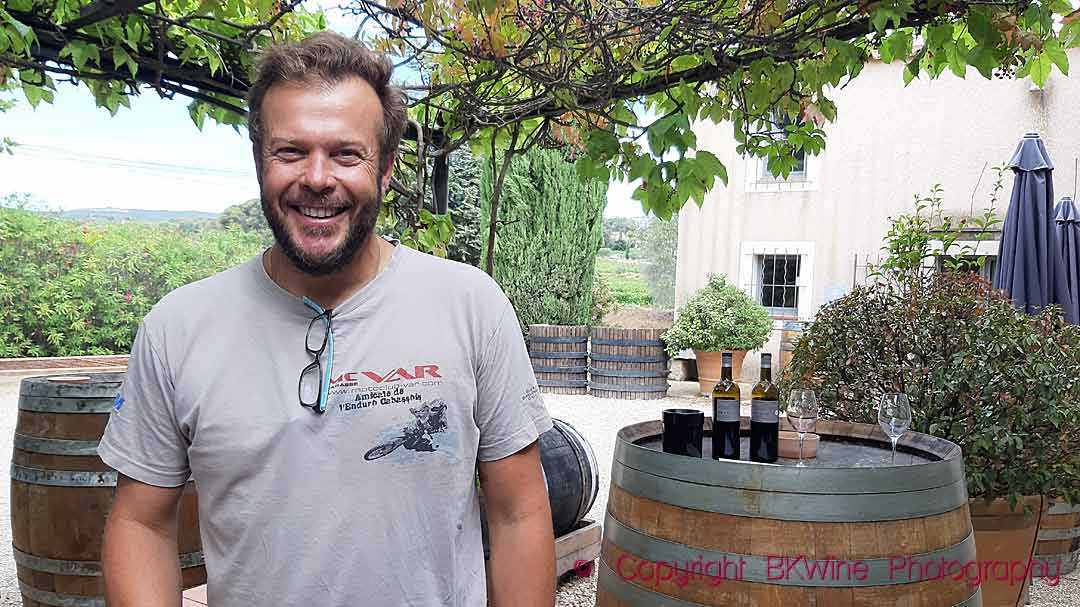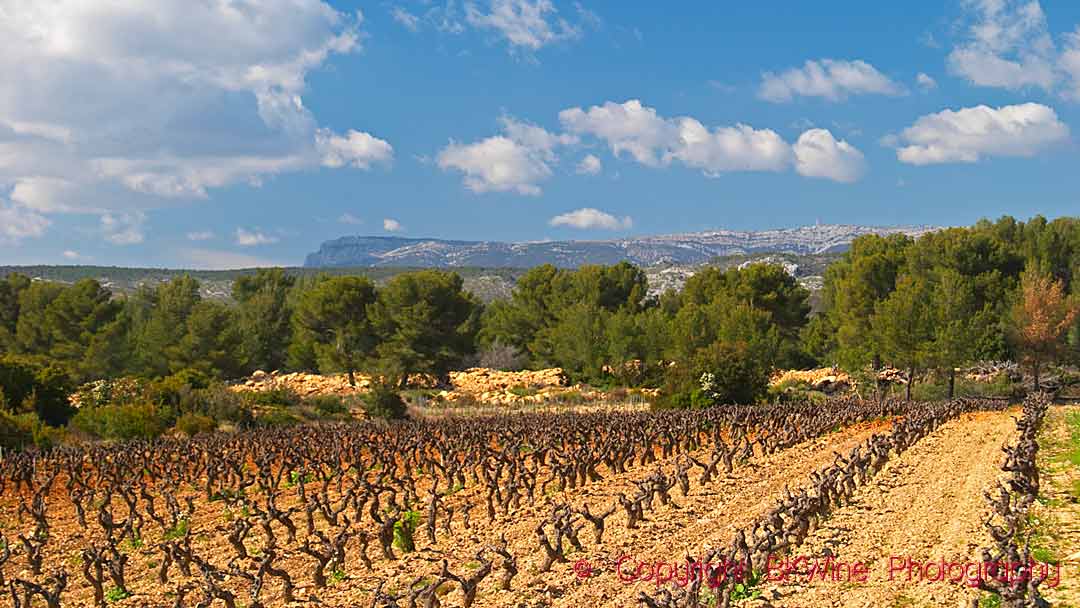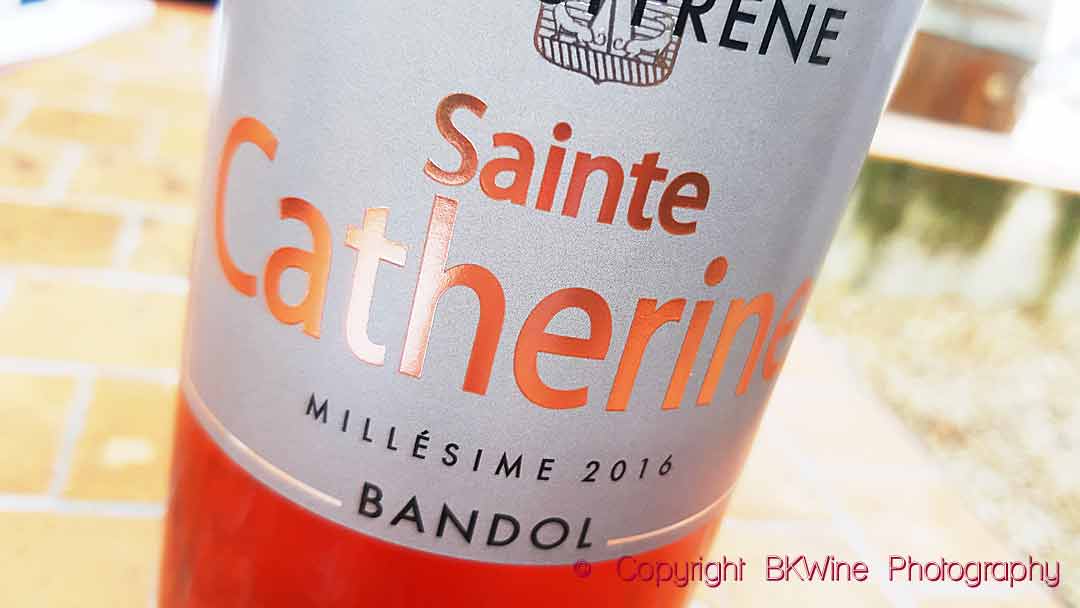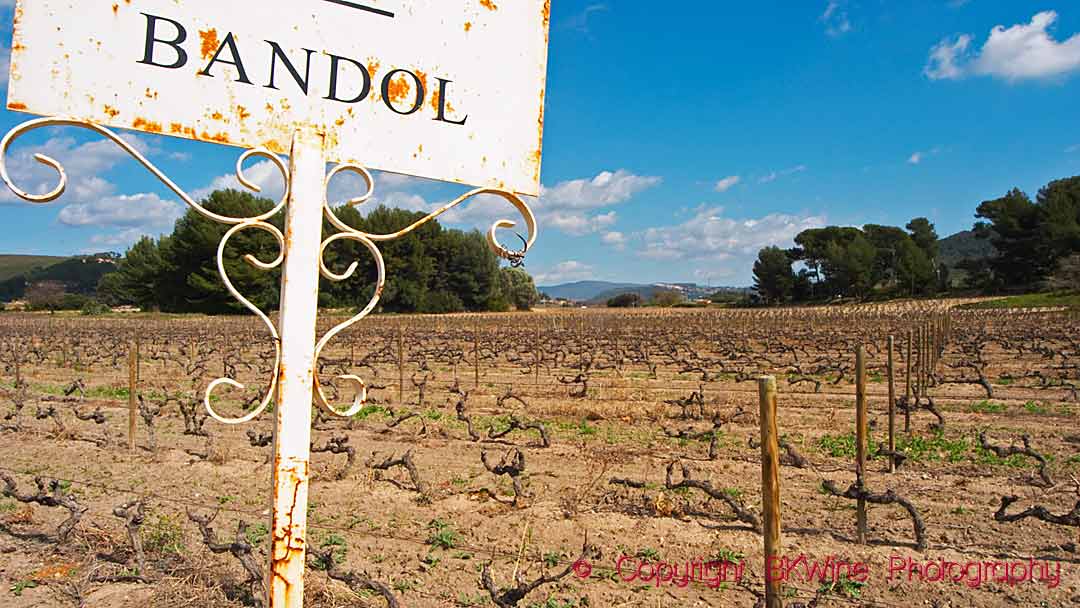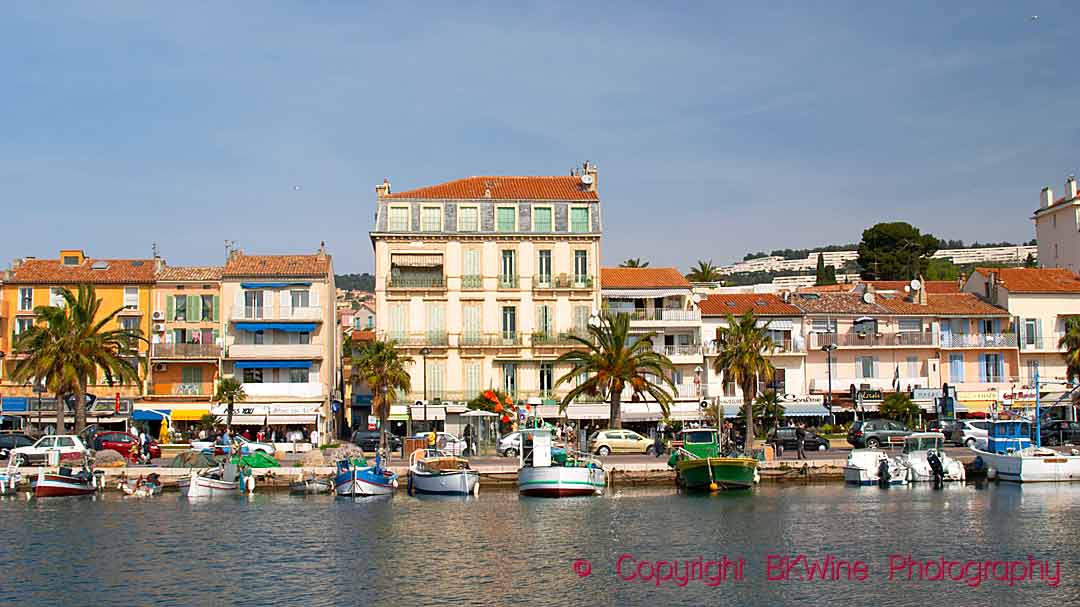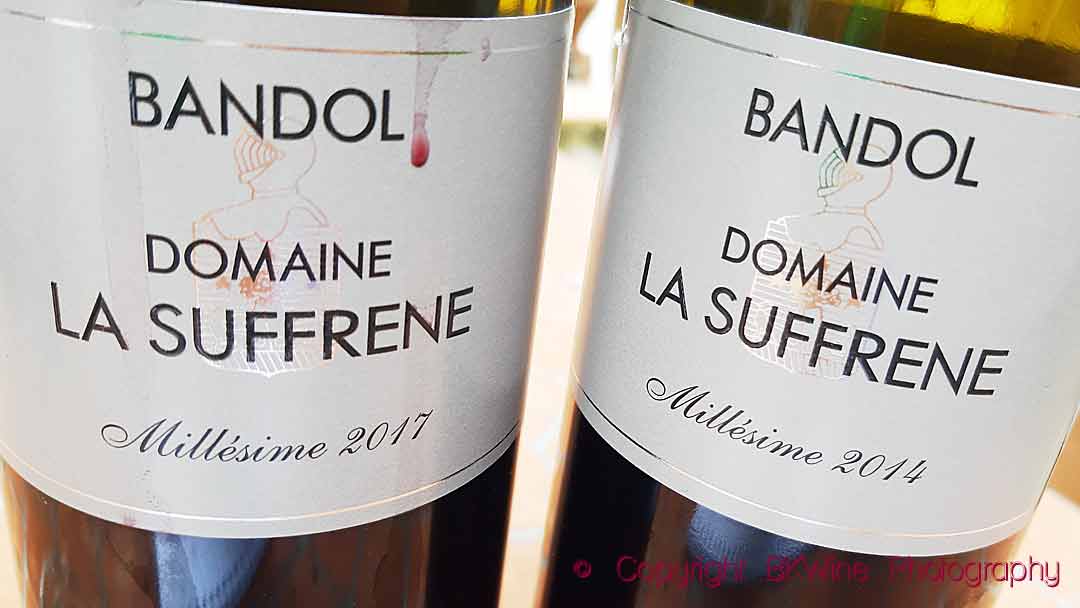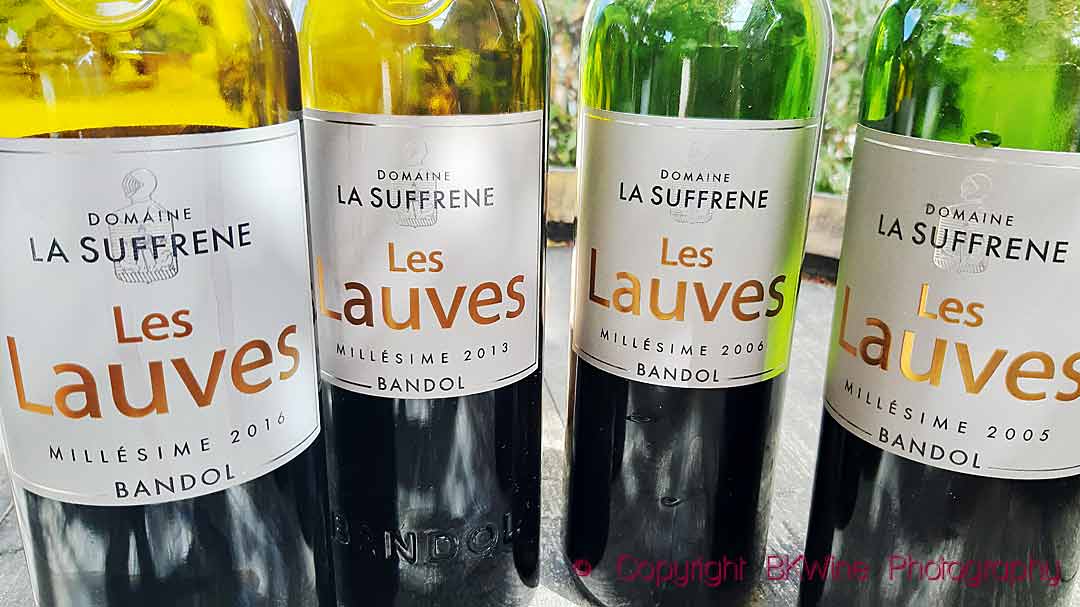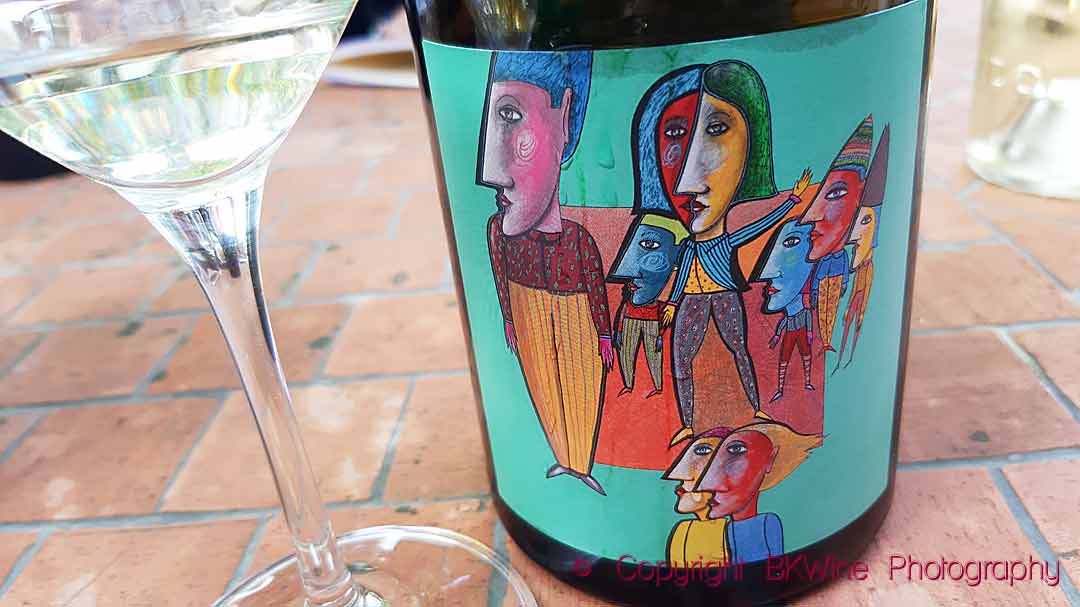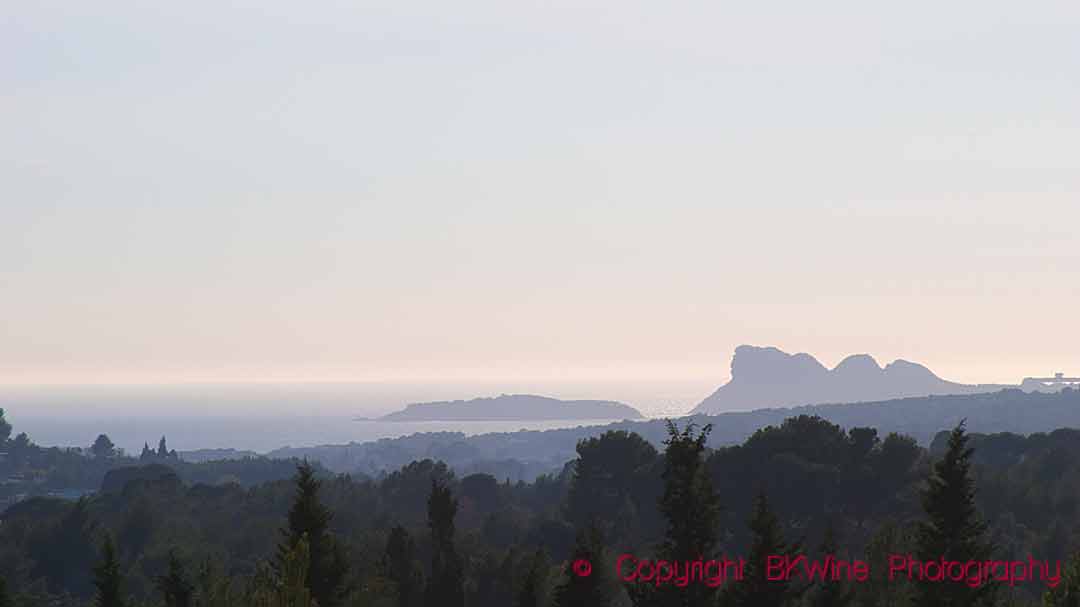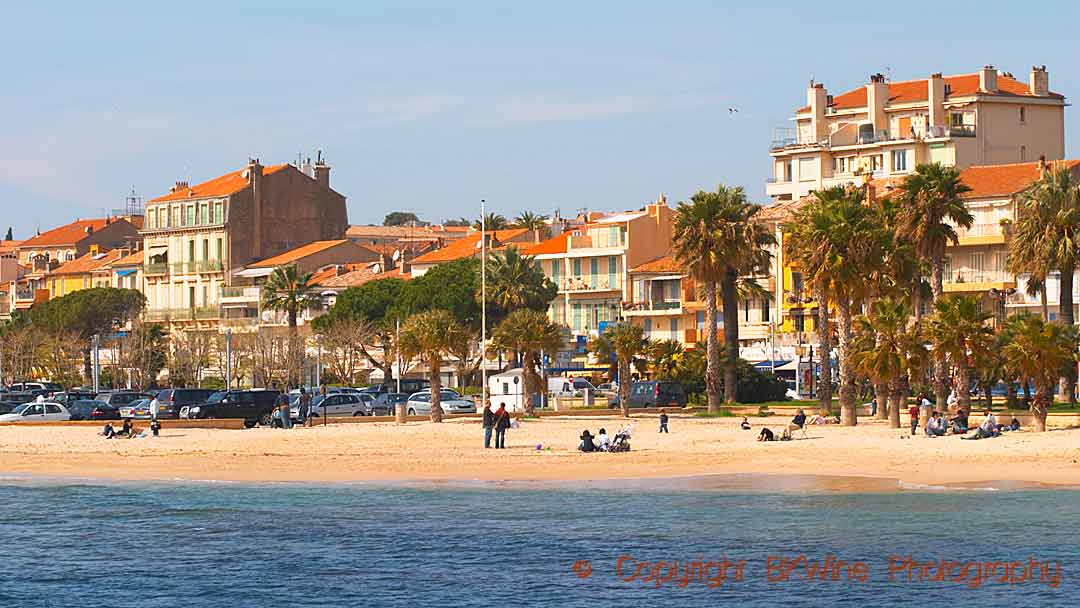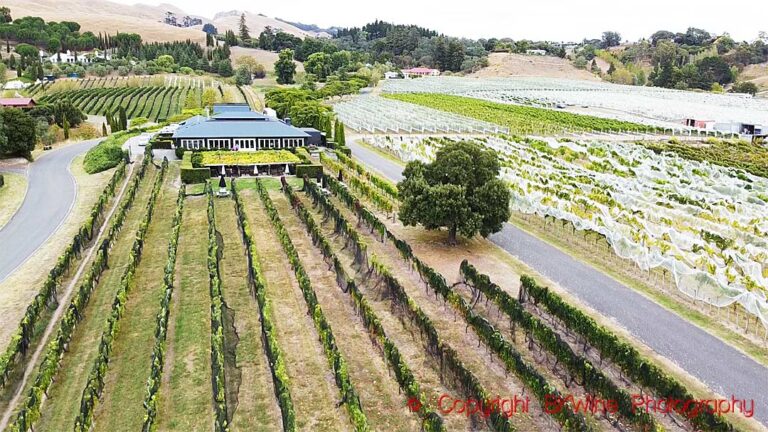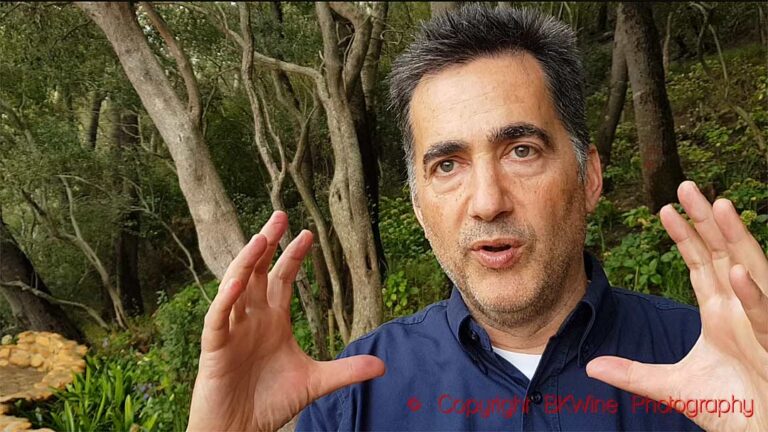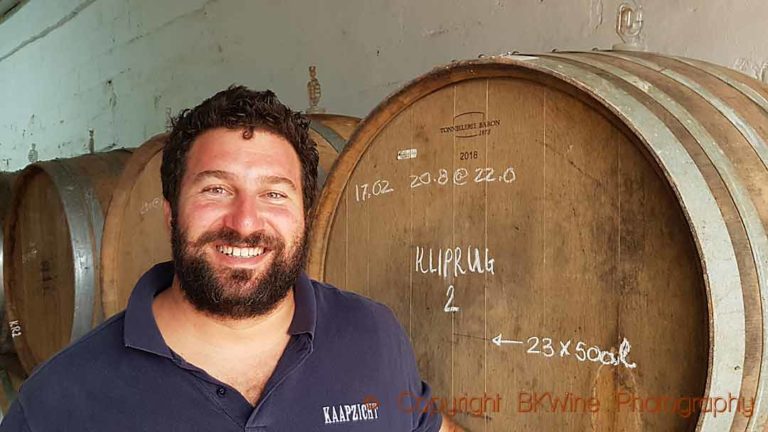We are still in the peak of summer, even though the calendar says September 4th. Bandol, a small appellation in Provence, shows itself from its most magnificent side. The grapes are ripe. The harvest has just begun. There’s bustling activity inside the cellars of Domaine la Suffrène. Suffrène is one of the leading wine producers in Bandol in Provence in southern France. They make some outstanding wines.
Cédric Gravier, owner and winemaker, has been managing Domaine la Suffrène since 1996. He was then 23 years old and took over from his grandfather, who belonged to the local cooperative. Cédric, however, had other plans. He wanted to make his own wine. He left the cooperative, built a cellar and expanded his vineyard surface as he went along. “Now we have 55 hectares,” he says, which is quite large in Bandol, which, Cédric points out, is a small appellation of 1500 hectares. With a scenic location by the Mediterranean, we might add.
This is a longer version of an article published on Forbes.com.
Domaine la Suffrène makes 200,000 bottles a year. 30% is red, 65% rosé and 5% white. 50% is exported; the United States and Canada are big export markets.
The rosé wine dominates the production in Bandol estates today. Admittedly, it is considered the best rosé wine in Provence, but still, it is a bit of a shame. Bandol has long been known for its fantastic red wine. And Cédric admits he would like to do more red. “Bandol’s most important wine is the red,” he says.
But no producer can ignore the growing demand for rosé wines. And yes, they are delicious. Not least Cédric’s two rosé wines that we taste, one from the latest vintage 2020, and a slightly older one from 2016.
Rosé wines
Bandol Rosé 2020, Domaine la Suffrène is made with 40% mourvèdre, 30% cinsault, 20% grenache and 10% carignan. It is very pleasant, quite complex with red berries, spices and some citrus. It is totally dry and stays fresh in the mouth. A rosé to drink with food. (16 euros)
In Bandol Rosé Sainte Catherine 2016, Domaine la Suffrène mourvèdre is more prominent with 90 % of the blend. This is a slightly more full-bodied style with developed aromas and notes of marmalade and almonds. “It shows how well mourvèdre develops in a rosé wine,” says Cédric. (25 euros)
Mourvèdre is the emblematic grape in Bandol, both for the reds and the rosé wines. “Mourvèdre is not used in so many places,” says Cédric. “It is difficult to get mature, and it really needs to be mature to be interesting. It gives a special character to the wine, a strong identity. It gives flavours of spices, pepper, eucalyptus.”
Mourvèdre influences the taste of the Bandol wines, and so does the climate. Provence is a warm and sunny region. But in 2021, it became a little too much of a good thing. “It has been a dry year with exceptionally low rainfall from October 2020 until the harvest (2021). The vines are stressed; in some, the ripening is blocked. It has mostly gone well, but it has been difficult in some places “, says Cédric.
Everything is harvested by hand and destemmed. At a sorting table, bad grapes are eliminated. The white grapes and grapes for the rosé wines are usually cooled down before being pressed. For these, he adds cultivated yeast. “It’s good because the fermentation then starts quickly and protects the must,” he says.
Red Bandol
For the red wines, the grapes are slightly crushed after the destemming and put into the fermentation tank, where they will ferment for 2-3 weeks. For the reds, he uses the natural yeast found on the skins and in the cellar. “During the fermentation, it is important to work with the extraction,” says Cédric. “Bandol are wines with body; we want to extract a lot. We do remontage (pumping-over) 1-2 times a day.”
The regulations for red Bandol stipulate ageing in barrels for 18 months. Cédric has large oak casks of around 50 hectolitres each. When he took over the estate, he bought three used ones. Since then, he has acquired more, little by little. “They keep for at least 30-40 years,” he says.
The ageing on the large casks gives no oak aromas or tannins to the wine. What Cédric wants is the micro-oxygenation that will soften the wine a little bit. “Oxygen,” he says, “is both the wine’s friend and foe, and mourvèdre needs oxygen.”
Mourvèdre wines have great ageing potential, but Cédric is looking for drinkability early. Actually, he wants his wine to “have drinkability all the time”, at all ages. He is also looking for freshness in the wines; he doesn’t like heavy wines.
Bandol Tradition 2017, Domaine la Suffrène has 60% mourvèdre and the rest grenache, cinsault and carignan. The nose is intense with ripe dark berries and oriental spices. The palate shows concentration, oriental spices, a fresh acidity, tannin structure with a soft finish. (17 euro)
Bandol Tradition 2014, Domaine la Suffrène has more developed aromas of leather, tobacco, a bit smoky. It is more elegant, and it still has good freshness. (20.50 euro)
The special cuvée Les Lauves comes from a particular plot of land. Here the vineyards are terraced, something that is not entirely unusual on Bandol’s sometimes very steep slopes. The terraces were built to facilitate the work and prevent soil erosion. They are held in place by beautiful dry-stone walls, in Provençal called restanques. The soil is calcareous and very rocky and stony. The altitude is a little higher here, 300 meters, which, Cédric points out, is important for the acidity.
The grape composition of Les Lauves is 90% mourvèdre and 10% old carignan. Our interesting vertical tasting with four vintages of Les Lauves clearly shows the “drinkability at all ages” that Cédric talks about. “You feel the fresh fruit for a couple of years”, says Cédric, “then the aromas develop, and after maybe ten years, you feel that the wine is starting to get old.”
All these vintages are superb, just in different ways.
Bandol Les Lauves 2016, Domaine la Suffrène has more marked tannins than the cuvée Tradition, but they are pleasant tannins. It is a rich wine, full-bodied with a dense structure, expressive with some herbal aromas. (31 euro)
Bandol Les Lauves 2013, Domaine la Suffrène is well balanced with developed aromas, ripe dark berries, tobacco. (34 euro)
Bandol Les Lauves 2006, Domaine la Suffrène is starting its mature phase with complex notes of ripe figs, leather and tobacco. It is still very fruity. Long and delicious taste. (48 euro)
Bandol Les Lauves 2005, Domaine la Suffrène is perfectly balanced and still fresh. There are elegant and smooth aromas of ripe red berries, autumn leaves. A long finish, a great wine. (50 euro)
White Bandol
Finally, the white wines, rare but delicious. 5% of the property’s production is white, not much, but maybe it will be more in the future. People are getting more and more interested in white Bandol, says Cédric.
The wines are always dry. The acidity is quite low in this region, and he therefore blocks the malolactic fermentation not to lower the acidity further. He vinifies partly with skin contact to get a good volume and a certain roundness in the wines. They age well, if you want to keep them. The grapes are clairette and ugni blanc.
Bandol Blanc Tradition2020, Domaine la Suffrène
Ugni blanc is destemmed and then sent directly to the press. Clairette, which is the more elegant of the two grapes, according to Cédric, is destemmed and crushed and then put in the ugni blanc juice to macerate for 24 hours at a cool temperature. The skin contact gives a lovely complexity and volume in the mouth. Aromas of peaches and white flowers. (16 euro)
Caritas, Vin de France 2019, Domaine la Suffrène
In 2019, Cédric wanted to make a white wine with a little more extraction and more structure and complexity. He started the vinification the same way as with the above-mentioned cuvée Tradition, but here the clairette skins remained in the must during the fermentation, almost until the end. Then they were removed, and he finished the fermentation without skins.
We have floral notes and apricots on the nose, a firm structure and a sensation of tannins, which comes from the skin contact. It is different and absolutely delicious. (22 euro)
He didn’t know if the wine would meet the requirements to become a Bandol. So he chose instead to sell the wine as generic vin de france. The label was designed by an artist from the nearby village of Castellet. His plan now is to do a new experiment with the same label every year. A great way for a winemaker to stay creative.
Travel
Provence is a beautiful part of France to visit. Both sea and mountains are near. You can enjoy the delicious wines and the local gastronomy on a wine tour to Provence with BKWine.
Travel to the world’s wine regions with the wine experts and the wine travel specialist.
Beautiful wine tours. BKWine wine tours.


